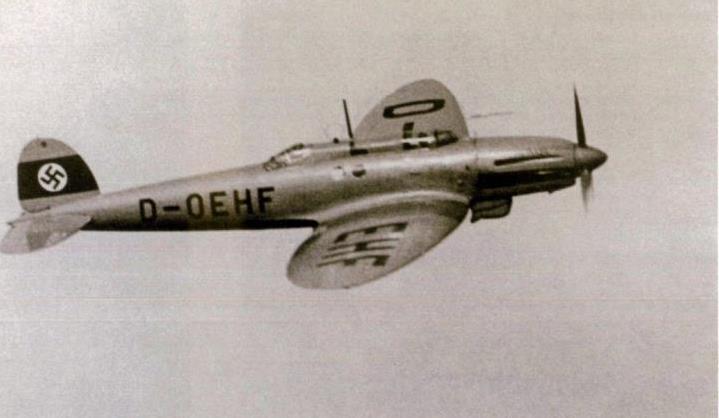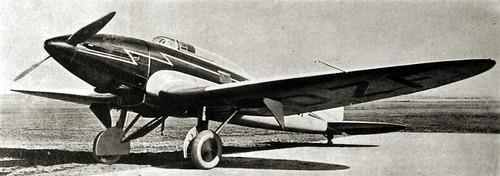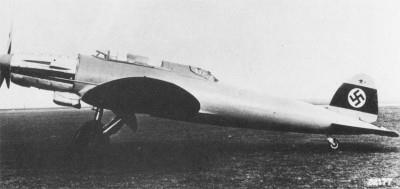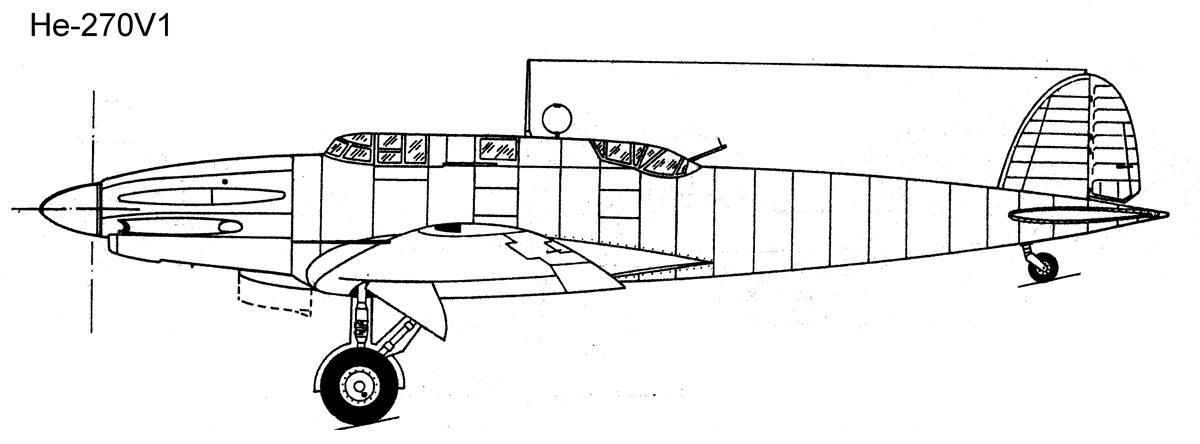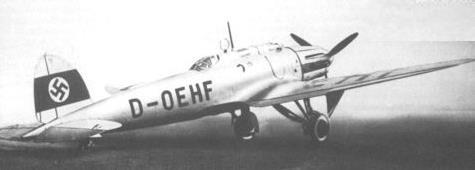| Type |
3-seat light bomber and reconnaissance |
| Engine |
1 Daimler-Benz DB 601 A |
| Dimensions |
Length 11,9 m, height 3,10 m, span 14,8 m , wing area 36,5 m2 , |
| Weights |
Empty 2670 kg, loaded 4150 kg , max. take off weight fuel 420 l |
| Performance |
Max.. speed 380 km/h at sea level, 460 km/h at 4000 m , cruising speed 335 km/h at 2000 m , range 1000 km, endurance , service ceiling 9000 m , climb to 1000 m 2,2 min., to 2000 m 5,5 min., to 4000 m 15,0 min. |
| Armament |
1 fixed 7,9 MG 17 1 7,9 mm MG 15 back of cockpit Bombload 200 kg |
| Type |
Werk.Nr |
Registration |
History |
| V1 |
1973 |
D-OEHF |
First flight early 1938 |
In 1937, Heinkel proposed to the Technical Department extend the service life of the He.70f by re-equipping them DB-600 or DV-601 engines and the new Equipment. It was assumed that with With these changes, the Luftwaffe quickly and cheaply get a scout at the level the most recent requirements. Project modernized aircraft received designation He.270. Same Proposal for He.70C modernization Lufthansa also received it.
On Heinkel's own initiative redesigned the last production He.70f airframe for the DV-601Aa engine with takeoff power 1175 hp was converted at the same time rear firing rig and sealed side windows characteristic of previous models, was installed MG-17 synchronous machine gun. In consoles, there was Installation of additional Tanks.
The He.270-V1 (D-OEHF) made its first flight in the spring of 1938. In the spring of 1938, the trials were encouraging, and the designers hoped for the prosperous fate of the aircraft. However, officials from the Ministry of Aviation they were more than cool to the younger brother of the famous "Blitz". Firstly, the latest DB 601 engines were already not enough for other aircraft building programs, and even more so they did not want to put them on the almost exhausted service life fuselages of old He-70s. And, secondly, the Dornier company already had a modern reconnaissance Do-17R-1, superior to the Heinkel in all respects. Likewise the leadership of Lufthansa did not show any interest in the He-270 either. In At the beginning of 1938, only five He-70Fs remained on passenger lines, and The airline was not going to extend their flight life. Naturally, in such a situation, further production of the He-270 did not take place.
